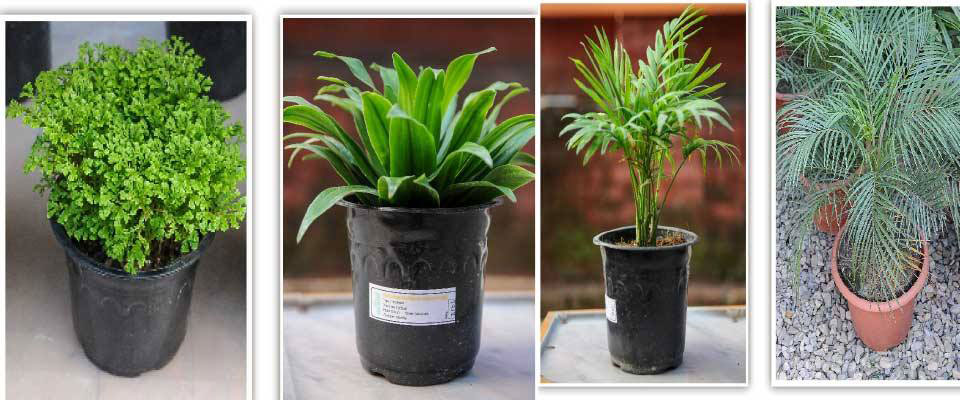
OR
all about you

Let’s admit it, many of us are guilty of having killed a plant or two. While there are those who have immaculate gardens and make taking care of plants look effortless, most of us know better. The task can be confusing, frustrating and, sometimes, downright hopeless. And this is even when we start, as recommended, with indoor plants.
So The Week sought the help of Aditya Shrestha from I am the Gardener. He and his partners have a nursery in Dhumbarahi and an outlet at Bhatbhateni. Shrestha reveals they hear these cases on a regular basis. If you are a beginner, he agrees, it’s best to start with flowerless, indoor plants but just because they are comparatively easy, doesn’t mean they don’t require any work or knowledge. In fact, you might just want to start by curbing of some of that initial enthusiasm and focusing on solid facts.
That time your plant thrived when you stopped looking after it.
This might sound strange but it is a rather familiar scenario says Shrestha. There have apparently been times where customers – especially new plant owners – have complained that despite their constant vigilance and care, their plant is withering away. And just when they thought it was turning into a hopeless case and put the plant aside, it miraculously revived itself. Indeed, it may appear to be a miracle of sorts but, according to folks at I am the Gardener, therein lies the first lesson.
As Shrestha put it, “Many clients tend to be super excited and extra enthusiastic about their new plant. They water it continuously or put it out in the sun for a long time. However, you can’t ever generalize the care a plant requires.”
When you buy a plant, it’s not enough to know its name alone. Plants, including those that are known as indoor plants, have specific requirements meaning the number of times you water it, the amount of water your use, sunlight exposure, fertilizers, all vary.
It’s said most care mistakes occur with watering schedules. “For example, there are plants that require dry periods so when you water it every day, it actually becomes weaker. Their dry period helps them develop their roots and become stronger,” explains Shrestha.
So after purchasing a plant, always make it a point to ask for its required specific care instructions from the nursery. It’s safer not to generalize.
That time you didn’t consider where your plant was going to live.
When you buy a plant, one of the first things you need to consider is its placement. Light as we know is crucial for any plants but Shrestha explains that when we talk about indoor plants, the factor of placement becomes that much more important to consider.
To begin with, indoor plants barely ever get direct sunlight. They have to survive more on ambient light that means filtered light through curtains or the existing light of the room. So ask the nursery about the amount of light the indoor plant you want to purchase needs and accordingly decide on its placement or vice versa – decide on the place and choose a plant whose nature fits the conditions of the space.
For instance, there are plants that need full sunlight making it more suitable for bigger rooms in the house like a drawing room. Similarly, there are plants that can survive in partial sun exposure meaning you can have them in places like a bathroom. There are also specific plants that make great options for the stairwells, the corridors, or even bedrooms.
Another reason to take the matter of your indoor plant’s placement seriously is because plants eventually become accustomed to their place in home. You will affect its health if you move it around too much. If you find a good space for your houseplant where it seems to be thriving, then it’s best to keep it there.
#Tip: If you notice that a part of your plant is green but the other is fading away, lack of equal exposure to the light source in the room might be the reason. In these cases, you will want to rotate your plants so that all its sides get equal exposure.
That time you didn’t bother to learn about fertigation.
“Fertigation refers to the process that combines fertilization and irrigation and helps improve conditions of the soil. It basically ensures that the plant doesn’t have to suffer from nutrient deficiencies,” explains Shrestha.
Now granted outdoor plants require more attention in this regard but that doesn’t mean you can totally skip this step when dealing with indoor plants. I am the Gardener believes when we fertigate, we help indoor plants achieve their maximum potential. With it we can add the nutrients that a plant struggles to achieve organically in its small pot.
Shrestha shares that there are many kinds of fertilizers available in our local market. From liquid fertilizers to those in sachets, they all serve different purposes and bring about different results in different time spans. So we can choose accordingly. “If you have already invested in plants,” adds Shrestha, “you might as well invest in the necessary fertilizers.”
Now again, how much and how many times you need to use them depends on the specific plant’s requirements. Be aware because over-fertilization can also kill your plants. When you get it all right though, the supplements shall help with its health, growth, and even bloom production.
Things to keep in mind
It is very easy to spot the telltale signs of a healthy plant. Their posture is always upright, their color the right shade of green, and their growth rate is also always on time. So the moment you see your indoor plant drooping or loosing color, it’s safe to assume there have been some missteps on your part.
While watering, choosing the placement of the indoor plant (light), and fertigation are the three most important steps in taking care of your indoor plants, there are other factors as well. However, these tend to vary according to the different nature of the plants.
For example, certain flowering plants require you to pinch off old blooms to encourage new growth whereas there are plants that are affected by the dust that might have collected on it. All you have to do is remember to regularly dust them off. Then there are the insects known for damaging plants – gnats, spiders – ones you might want to keep a look out for.
So it all brings us back to our initial conclusion: Taking care of plants, at first, can be confusing, frustrating and sometimes, downright hopeless. Shrestha, for one, believes in such instances it is best to consult experts. Even at I am the Gardener, they are known to entertain such calls and queries. But he also assures us that overtime you will develop this sense and not killing your indoor plants will be easy indeed.
You May Like This

Let your walls speak your style
KATHMANDU, Feb 22: When it comes to home décor, the task is absolutely incomplete without decorating the walls. Although the idea... Read More...

Fitbit tracks your steps; now it wants to chart your sleep, too
Fitbit, whose devices encourage people to walk 10,000 steps each day, now wants to put them to sleep as well. Read More...

Now, charge your phone using your body’s own energy (with video)
HandEnergy is an ingenious apple-sized device that charges your phone anytime, anywhere. But what really makes this thing special is... Read More...




Just In
- NEPSE nosedives 19.56 points; daily turnover falls to Rs 2.09 billion
- Manakamana Cable Car service to remain closed on Friday
- Nepal govt’s failure to repatriate Nepalis results in their re-recruitment in Russian army
- Sudurpaschim: Unified Socialist leader Sodari stakes claim to CM post
- ED attaches Raj Kundra’s properties worth Rs 97.79 crore in Bitcoin investment fraud case
- Newly-appointed Auditor General Raya takes oath
- CM Mahara expands Cabinet in Lumbini Province
- FinMin Pun addresses V-20 meeting: ‘Nepal plays a minimal role in climate change, so it should get compensation’















Leave A Comment